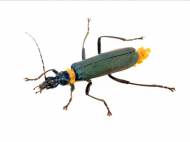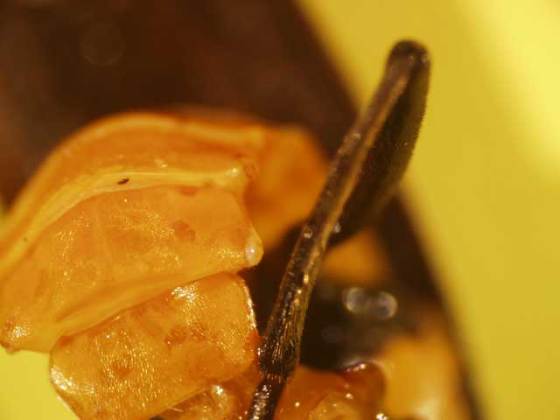Soldier beetle inspires new medicine biotech synthesis
 CSIRO researchers and a colleague at Sweden’s Karolinska Institute recently revealed details about their research related to an exotic fatty acid called dihydromatricaria acid (DHMA), which is one of a group called polyynes that have known anti-microbial and anti-cancer properties. Their research could be used to employ biotechnology in creation of new antibiotic and anti-cancer chemicals.
CSIRO researchers and a colleague at Sweden’s Karolinska Institute recently revealed details about their research related to an exotic fatty acid called dihydromatricaria acid (DHMA), which is one of a group called polyynes that have known anti-microbial and anti-cancer properties. Their research could be used to employ biotechnology in creation of new antibiotic and anti-cancer chemicals.
While DHMA and similar polyyne fatty acids are found in a wide variety of plants, fungi, liverworts, mosses, marine sponges and algae, these compounds have proved very difficult to manufacture using conventional chemical processes. However, CSIRO researchers found that soldier beetles have the ability to combine three genes to generate a white viscous fluid which contains DHMA. The soldier beatles use their glands to create this fluid in order repel potential attacks from predators, as well as in a wax form to protect against infection.
“For the first time, our team has been able to isolate and replicate the three genes that combine to make the potent fatty acid that soldier beetles secrete to ward off predators and infection”, said Dr Victoria Haritos, CSIRO Ecosystem Sciences research leader.
At the moment, soldier beetles are the only known animals to contain DHMA. This, together with the observation that the beetles forage on plants (such as daisies) which contain a lot of these types of fatty acids, led to previous incorrect conclusions that the DHMA in soldier beetles was derived from their diet.
“Through our research and the gene differences we have discovered, we now know soldier beetles have evolved this same defensive compound entirely independently of its production in plants and fungi”, Dr Haritos said.
Dr Haritos and her team have developed a way to reproducing these polyyne chemicals in living organisms like yeast, using mild conditions. The discovery made by CSIRO researchers is important because it could be used to synthesize new antibiotics, anti-cancer medicine, or inspire other processes that could be used in new industrial purposes.
For more information, read the paper published in the journal Nature Communications: “The convergent evolution of defensive polyacetylenic fatty acid biosynthesis genes in soldier beetles”.










Leave your response!